From a Studio Apartment to a Large Detached Home: What the Average Peak Millennial Can Afford Across Canada
- The average Canadian peak millennial’s purchasing power dropped by approximately 16.5% ($40,103) after the introduction of the OSFI stress test
- Peak millennials can expect 12% less living space on average in Greater Vancouver compared to last year
- The footprint of a typical peak millennial property grew in the Greater Toronto Area as properties affordable to this demographic continued to move away from the city centre
- A peak millennial can purchase a home in Moncton, New Brunswick for the cost of the 20 per cent down payment on a home in the market segment accessible to them in the Greater Toronto Area or Greater Vancouver
TORONTO, April 26, 2018 – According to Royal LePage, Canada’s leading real estate services provider, peak millennials[1] are seeing significant disparities in the properties they can afford in the country’s largest cities. With a median salary of $38,148[2], this generation typically has a maximum home buying budget of $203,246[3]. This factors in a 20 per cent down payment, and the impact of OSFI’s new stress test, which has reduced the average peak millennial’s purchasing power by approximately 16.5 per cent, or $40,103. However, given that the aggregate Canadian home value currently rests at $605,512[4], many must either bide their time or look for creative solutions to finance a home purchase.
In major cities across Canada, a growing number of peak millennials will save, pool their money with a partner and/or borrow funds from their parents, many of whom are downsizing in retirement and can financially contribute to their child’s first home purchase. While peak millennials are largely able to afford their monthly mortgage expenses, coming up with an adequate down payment often proves to be the greatest hurdle to homeownership among the demographic. In areas with high home values, like Greater Vancouver and the Greater Toronto Area, a 20 per cent down payment often equates to over $160,000, or roughly the same price as a home in Moncton, New Brunswick.
“We have seen a rare pause this year in the relentless rise in the cost of housing,” said Phil Soper, president and chief executive officer, Royal LePage. “In our largest cities, it is difficult for young people to purchase a home on a single household income. Some will purchase homes with family or friends, and some are following the age-old practice of saving money and waiting until they can effectively double their maximum budget with a life partner.”
When combined, a dual income peak millennial couple has a typical maximum budget of $406,479, exclusive of any help from the bank of mom and dad. In the first quarter of 2018, the average Canadian home listed between $325,000 to $425,000 (the price range of homes accessible to this dual-income demographic, with the higher end often receiving some financial assistance from their families) had 2.7 bedrooms, 1.8 bathrooms and 1,269 sq. ft. of living space. When broken out by region, homes listed between $325,000 to $425,000 in Greater Vancouver had an average of 1.5 bedrooms and 1.2 bathrooms, while homes in the Greater Montreal Area and the Greater Toronto Area offered peak millennial purchasers an average of 2.9 and 1.7 bedrooms and 1.5 and 1.4 bathrooms, respectively. Meanwhile, on the east coast, Halifax delivered the biggest bang for a peak millennial’s buck, offering them an average of 3.1 bedrooms and 3.0 bathrooms. In fact, of the seven cities studied across Canada, the region offered the most living space overall for prospective peak millennial purchasers, with homes in this price range averaging 1,736 sq. ft. In contrast, Greater Vancouver offered prospective peak millennial purchasers the least amount of living space with an average of 788 sq. ft.
“There are striking differences in the options available to peak millennial purchasers across Canada,” continued Soper. “While $425,000 will largely net an entry-level condo in Greater Vancouver and the Greater Toronto Area, on the east coast, this budget unlocks the majority of the market, offering prospective millennial purchasers large, detached homes with all of the bells and whistles.”
Individual Peak Millennial Purchasing Power with an Annual Salary of $38,148[5]
| Before Stress Test | After Stress Test | Absolute Change | Percentage Change | |
| Qualifying Interest Rate | 3.09% | 5.14% | 2.05% | 66.3% |
| Maximum Purchase Price | $243,349 | $203,246 | -$40,103 | -16.5% |
| Maximum Mortgage | $194,679 | $162,596 | -$32,083 | |
| Associated 20% Down Payment | $48,670 | $40,649 | -$8,021 |
Peak Millennial Couple’s Purchasing Power with a Combined Annual Salary of $76,296[6]
| Before Stress Test | After Stress Test | Absolute Change | Percentage Change | |
| Qualifying Interest Rate | 3.09% | 5.14% | 2.05% | 66.3% |
| Maximum Purchase Price | $486,674 | $406,479 | -$80,195 | -16.5% |
| Maximum Mortgage | $389,340 | $325,183 | -$64,157 | |
| Associated 20% Down Payment | $97,334 | $81,296 | -$16,038 |
Aggregate & Regional Home Attributes for Homes Between $325,000 and $425,000[7]
(For the three-month period ended March 31st)
| City | Year | Beds | Baths | Living Space |
| Canada | 2017 | 2.7 | 1.8 | 1,308 sq. ft. |
| 2018 | 2.7 | 1.8 | 1,269 sq. ft. | |
| Halifax | 2017 | 3.1 | 2.4 | 1,787 sq. ft. |
| 2018 | 3.1 | 3.0 | 1,736 sq. ft. | |
| Ottawa | 2017 | 3.0 | 2.2 | 1,487 sq. ft. |
| 2018 | 2.9 | 2.3 | 1,495 sq. ft. | |
| Calgary | 2017 | 2.6 | 2.0 | 1,195 sq. ft. |
| 2018 | 2.6 | 2.1 | 1,210 sq. ft. | |
| Regina | 2017 | 2.9 | 2.0 | 1,356 sq. ft. |
| 2018 | 3.0 | 1.7 | 1,341 sq. ft. | |
| Winnipeg | 2017 | 3.0 | 2.0 | 1,482 sq. ft. |
| 2018 | 3.0 | 2.0 | 1,413 sq. ft. | |
| Greater Montreal Area | 2017 | 3.1 | 1.7 | 1,468 sq. ft. |
| 2018 | 2.9 | 1.5 | 1,344 sq. ft. | |
| Greater Toronto Area | 2017 | 1.6 | 1.4 | 816 sq. ft. |
| 2018 | 1.7 | 1.4 | 856 sq. ft. | |
| Greater Vancouver | 2017 | 1.7 | 1.4 | 878 sq. ft. |
| 2018 | 1.5 | 1.2 | 788 sq. ft. |
City Summaries and Trends
Greater Vancouver
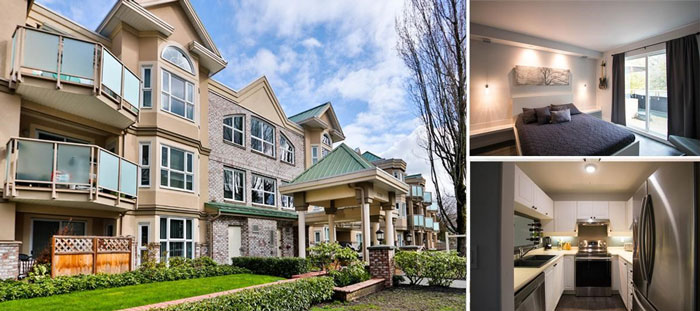
310-2231 Welcher Avenue, Port Coquitlam, BC • $399,900
Listing Agent: Brandon Larson, Royal LePage West Real Estate Services
Bedrooms: 1
Bathrooms: 1
Living Area: 680 sq. ft.
In Greater Vancouver, Canada’s most expensive market, high home values have pushed many peak millennials into the suburbs, like Coquitlam, Langley and Surrey, or further east into Abbotsford, Mission and Chilliwack where properties are even more affordable. Over the last year, high rates of price appreciation and heightened competition over listings within the region’s entry level market have made it difficult for peak millennials to find property, especially in the downtown core. At the time this release was written[8], only five active listings in Vancouver proper were available for purchase between $325,000 and $425,000.
In the first quarter of 2018, purchasers within the region got significantly less home relative to all other regions studied, with a $325,000 to $425,000 budget buying an average of 1.5 bedrooms, 1.2 bathrooms and 788 sq. ft. of living space.
“As prices continue to grow across Greater Vancouver, peak millennials have found it hard to find a home,” said Adil Dinani, real estate advisor, Royal LePage West Real Estate Services. “New mortgage regulations have weakened this demographic’s purchasing power, making it tougher to compete with other buyers who now find themselves in the entry-level market as well.
“When coupled with entry-level home prices, which now rival most two-storey values in other parts of the country, and are continuing to rise thanks to the region’s strong economy, these purchasers are trying everything they can to get into the market before prices move out of their reach,” concluded Dinani. “From what we are observing, the majority of purchasers within this age range are getting assistance from their families to find enough money for a down payment on a starter home.”
Calgary
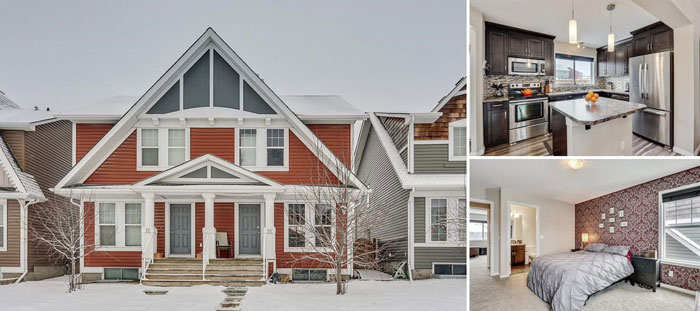
16 Auburn Crest Lane SE, Calgary, AB • $410,000
Listing Agent: Laura Kitchen, Royal LePage Solutions
Bedrooms: 2
Bathrooms: 2+1
Living Area: 1,095 sq. ft.
Across the mountains in Calgary, peak millennial purchasers fared significantly better than their Greater Vancouver counterparts when looking for a home between $325,000 and $425,000. On average in Calgary, this budget bought a 2.6 bedroom, 2.1 bathroom single-family home during first quarter of 2018 with 1,210 sq. ft. of living space.
Recently, the region’s improving economy and relatively less expensive home prices have enticed many peak millennial purchasers from British Columbia into its residential real estate market in search of affordable property. Together with native Calgarians, these prospective homeowners tended to search for property in the region’s suburban markets in order to find larger, fully upgraded two-storey homes.
“While many Canadians left Alberta during the province’s economic downturn in search of jobs, the region’s recent economic uptick has enticed a growing number of B.C. residents to move to Calgary to take advantage of affordable home prices,” said Dawn Maser, realtor, Royal LePage Benchmark.
“For the most part, peak millennial purchasers are choosing to live farther from downtown Calgary strictly due to affordability,” continued Maser. “This demographic typically desires spacious, fully upgraded homes that they can grow into and raise a family. Many are willing to give up proximity to the downtown core for a backyard and amenities that make family life easier.”
Regina
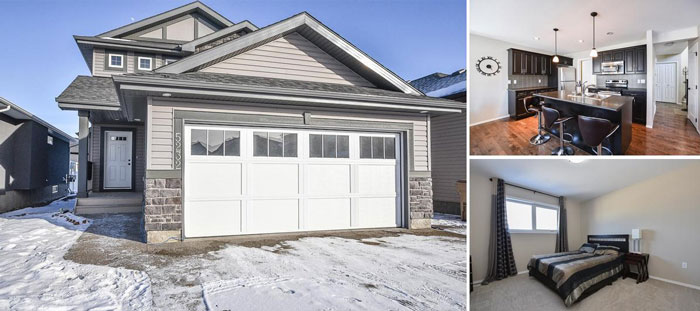
5232 Canuck Crescent, Regina, SK • $407,900
Listing Agent: Aideen Zareh, Royal LePage Regina Realty
Bedrooms: 3
Bathrooms: 3
Living Area: 1,546 sq. ft.
Despite the region’s great affordability relative to other markets studied across Canada, peak millennial purchasers are increasingly looking for family assistance to purchase a home in Regina, in part due to its muted, but recovering economy.
Although many have saved enough money to cover a down payment on an entry level home, to qualify for a mortgage under newly introduced regulations, peak millennial purchasers have had to increasingly get family members to cosign their mortgages in order to get approved.
“While peak millennials in Regina are often able to save up enough money for a down payment on a home, mom and dad must often pitch in and guarantee their loan to ensure that repayment obligations will be met,” said Brin Werrett, realtor, Royal LePage Regina Realty. “Even though these purchasers can afford a single-family detached property in the region, the majority opt for a smaller, attached starter home so that they can keep up with mortgage payments and still have a high quality of life. This also provides peace of mind if interest rates increase.”
During the first quarter of 2018, a peak millennial’s budget of $325,000 to $425,000, bought them a single-family home with 3.0 bedrooms, 1.7 bathrooms and 1,341 sq. ft. of living space in the region.
Winnipeg
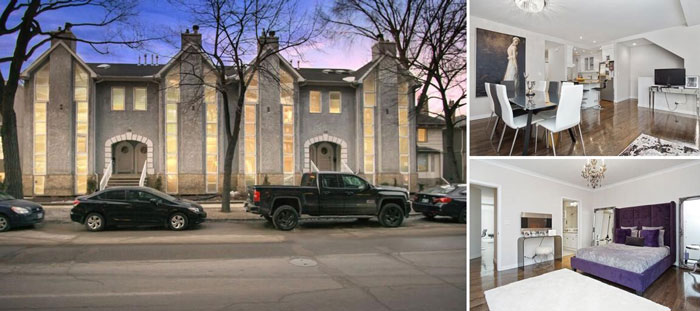
1-116 Wellington Crescent, Winnipeg, MB • $414,900
Listing Agent: Sebastian Sotello, Royal LePage Prime Real Estate
Bedrooms: 3
Bathrooms: 2+1
Living Area: 2,400 sq. ft.
Peak millennials in the Winnipeg real estate market continue to face strong competition for available property in the region, with many homes in the entry-level market garnering multiple offers and selling above their asking price. While couples can largely afford more than the average home found within the region, many have elected to look to lower-priced segments to ensure a high quality of life instead of large monthly payments.
Another growing trend in the region is the increase in the number of young, professional women who are becoming sole property owners.
“Unlike most other major markets in Canada, peak millennials are often able to afford a property within the region on their own,” said Liz Taylor, alternate broker, Royal LePage Prime Real Estate. “With some of the most affordable homes in the country, and a strong, stable economy, the region continues to attract new peak millennial buyers.”
“Even when facing stiff competition, peak millennials fare extremely well in Winnipeg’s residential real estate market,” concluded Taylor.
During the first quarter of 2018, Winnipeg’s residential real estate market continued to offer peak millennials considerable value relative to other regions studied. With a budget between $325,000 and $425,000, these purchasers were able to find a home with an average of 1,413 sq. ft. of living space, 3.0 bedrooms and 2.0 bathrooms.
Greater Toronto Area

302-3069 Lakeshore Boulevard West, Toronto, ON • $410,000
Listing Agent: Cynthia Jones, Royal LePage Signature Realty
Bedrooms: 1
Bathrooms: 1
Living Area: 778 sq. ft.
Peak millennials are finding it harder to purchase property in the Greater Toronto Area, as competition and price appreciation in the entry-level segment continues to intensify despite other housing segments witnessing some price softness. Recently, younger prospective homeowners have begun to either look to pre-construction units, or areas outside of the metropolitan area in order to break into the market. While having to either wait, or simply change some of their initial expectations, these actions can be seen as a direct result of many feeling that, if they don’t buy now, entry-level home values may continue to rise completely out of their reach.
“Despite the Greater Toronto Area residential real estate market largely slowing since the beginning of the year, entry-level properties continue to trade hands, as new mortgage regulations have pushed many into the segment, increasing competition amongst buyers,” said Tom Storey, sales representative, Royal LePage Signature Realty. “Overall, the new stress test has severely impacted peak millennial purchasers. With added competition, and a shortage of inventory driving prices up, it is getting harder and harder for peak millennials to pass the stress test and find affordable property.
“Now, we’re seeing many younger purchasers look to regions like Halton, Waterloo or London for affordable property, or simply buy pre-construction condominium units in hopes that they will be able to qualify for a mortgage once it is needed down the road,” concluded Storey.
During the first quarter of 2018, peak millennial purchasers with a budget of $325,000 to $425,000 bought a home with an average of 1.7 bedrooms, 1.4 bathrooms and 856 sq. ft. of living space. Of particular interest, the average GTA-based home’s square footage in this segment increased year-over-year, growing from 816 sq. ft. in the first quarter of 2017. This is a result of many condominiums in the downtown core surpassing $425,000, making larger properties in the north end of the Greater Toronto Area the preeminent housing stockfound in this price range.
Ottawa
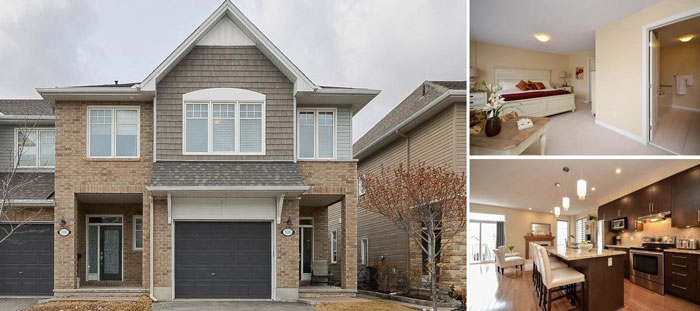
2465 Regatta Avenue, Ottawa, ON • $419,900
Listing Agent: James Dean, Royal LePage Team Realty
Bedrooms: 3
Bathrooms: 2+1
Living Area: 2,121 sq. ft.
Contrary to peak millennials in the Greater Toronto Area, those in Ottawa fare extremely well when searching for property in the region. Boasting a median aggregate home price of $437,243 during the first quarter of 2018, properties within the region remain relatively affordable, offering peak millennials a chance to enter the market at an early age. With strong economic growth and ample job prospects, younger purchasers are largely able to afford the majority of homes in the region, yet seek out properties at lower price points to ensure that they can still enjoy a relatively high quality of life despite the new monthly expenses associated with homeownership.
On average, during the first quarter of 2018, peak millennial purchasers within the region could afford to buy an attached, single-family home with 2.9 bedrooms, 2.3 bathrooms and 1,495 sq. ft of living space.
“Recently, we’ve seen greater demand from peak millennials in the Ottawa residential real estate market thanks to the region’s booming tech sector,” said Adam Mills, broker of record, Royal LePage Team Realty Adam Mills, Brokerage. “Purchasers within this age range are generally looking for move-in ready homes that require little to no renovations and are within a reasonable distance from work and local amenities.
“Despite the availability of larger, detached homes in the rural areas just outside of Ottawa, many younger prospective homebuyers simply remain uninterested in sacrificing commute time and proximity to amenities for more space at the end of the day,” concluded Mills.
Greater Montreal Area
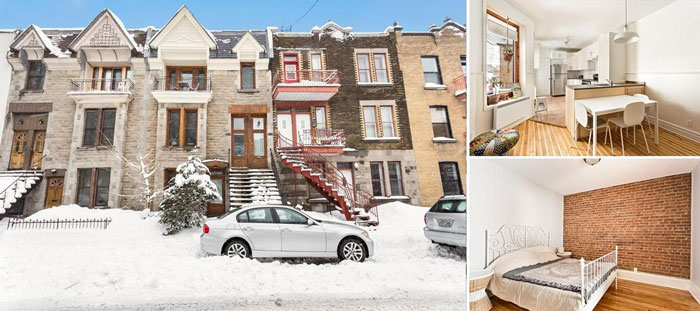
4018 St-André St., Montreal, QC • $415,000
Listing Agent: Dean McKay, Royal LePage Privilège
Bedrooms: 2
Bathrooms: 1
Living Area: 1,083 sq. ft.
Recently, peak millennials have begun to find it hard to find property in the Greater Montreal Area, as heightened competition, multiple offers and low inventory levels have pushed prices beyond their means. As a result, an emerging trend is that these prospective homebuyers are seeking financial assistance from family members more often to avoid resetting expectations on their first home.
“As home values appreciate faster than peak millennials are able to save, many purchasers within this demographic are waiting on the sidelines in order to combine their income with a potential life partner, or are asking their parents for help,” said David Tardif, real estate broker, Royal LePage Altitude. “Now more than ever, parents are jumping in to help their children build their savings and access the housing market to ensure that they aren’t completely left behind. This is becoming more and more of an option, even when compared to last year.”
In the first quarter of 2018, the typical home in the region available to peak millennials with a budget between $325,000 and $425,000 was a condo with an average of 2.9 bedrooms, 1.5 bathrooms and 1,344 sq. ft. of living space. While fairly comparable to the average home found in Regina in this segment, inventory within this price range was scarcer across the Greater Montreal Area during the first quarter of 2018, creating more competition over the few listings available.
Halifax
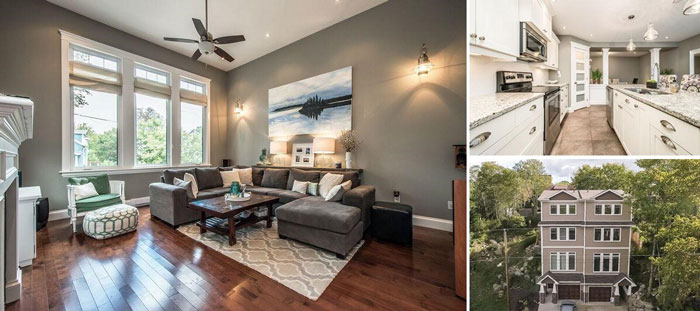
6B Idlewylde Road, Halifax, NS • $424,900
Listing Agent: Chelsea Hill, Royal LePage Atlantic
Bedrooms: 3
Bathrooms: 4
Living Area: 2,600 sq. ft.
Peak millennials are increasingly turning to Halifax’s residential real estate market for its affordability relative to the rest of Canada. Many international students and prospective homeowners from Ontario have decided to enter the region in order to find large, move-in ready homes. These groups, along with local residents, are often choosing to purchase townhomes or condominiums that are near the downtown core, given that they are in close proximity to local amenities and offer little maintenance in comparison to large detached properties found in outlying rural regions.
Overall, when looking at homes available between $325,000 to $425,000, Halifax offered peak millennials the most value when compared to all other regions studied. During the first quarter of 2018, peak millennials with this budget could purchase a home in Halifax that had 1,736sq. ft of living space, 3.1 bedrooms and 3.0 bathrooms: the highest number of bedrooms and bathrooms in this segment.
“Recently, many peak millennials have begun to flock to Halifax to purchase some of the most affordable homes in the nation,” said Marc Doucet, broker of record, Royal LePage Atlantic. “As the region’s economy continues to strengthen, we expect this trend to continue, as prospective millennial home buyers from across the country increasingly venture into the area to live and work.”
About Royal LePage
Serving Canadians since 1913, Royal LePage is the country’s leading provider of services to real estate brokerages, with a network of close to 18,000 real estate professionals in more than 600 locations nationwide. Royal LePage is the only Canadian real estate company to have its own charitable foundation, the Royal LePage Shelter Foundation, dedicated to supporting shelters for women and children as well as educational programs aimed at ending domestic violence. Royal LePage is a Brookfield Real Estate Services Inc. company, a TSX-listed corporation trading under the symbol TSX:BRE.
For more information visit: www.royallepage.ca.
For further information, please contact:
Michael Jesus
Kaiser Lachance Communications
p: 647-783-1807
e: michael.jesus@kaiserlachance.com
[1] The term “Peak Millennial” was first coined by U.S. economist, Dowell Myers to describe the largest cohort of millennials and their potential purchasing power (born between 1987 and 1998). For the purposes of homebuyer research, Royal LePage focuses on Peak Millennials aged 25 and older. In 2018, the range of birth years studied is 1987-1993.
[2] Statistics Canada 2016 Tax Data; adjusted for inflation
[3] Generated using the mortgage affordability calculator on Ratehub.ca, using five year fixed mortgage with 20 per cent down and a salary of $38,148. The mortgage rate for the stress test was set to 5.14 per cent to reflect the current five year Bank of Canada benchmark rate, while the pre-stress test rate used was 3.09 per cent.
[4] Royal LePage National Home Price Composite, Aggregate National Home Value, Q1 2018
[5] Assuming heating costs and property taxes equate to $51 and $134, respectively.
[6] Assuming heating costs and property taxes equate to $85 and $224, respectively.
[7] Data provided by RPS Real Property Solutions
[8] Listings in Greater Vancouver reviewed on April 23, 2018
